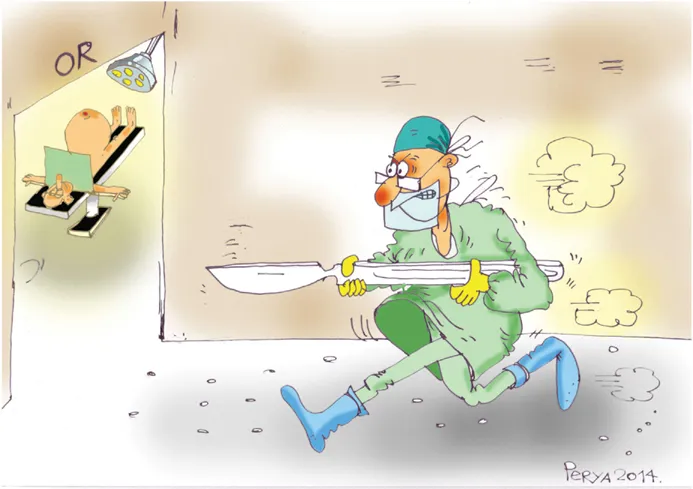
Schein's Common Sense Emergency Abdominal Surgery, 5th Edition
Rosin, Danny, Rogers, Paul N. , Cheetham, Mark, Schein, Moshe
- English
- ePUB (adapté aux mobiles)
- Disponible sur iOS et Android
Schein's Common Sense Emergency Abdominal Surgery, 5th Edition
Rosin, Danny, Rogers, Paul N. , Cheetham, Mark, Schein, Moshe
À propos de ce livre
Since Mondor's times in the forties of the last century there was no other book in surgery to be written so easy and witty… Boris D. Savchuk, World Journal of SurgeryThis, the fifth edition of Schein's Common Sense Emergency Abdominal Surgery, builds on the reputation of the four previous editions. Already a worldwide benchmark, translated into half a dozen languages, this book guides surgeons logically through the minefields of assessment and management of acute surgical abdominal conditions. Tyro and experienced surgeons alike will benefit from the distilled wisdom contained in these pages. The direct, no-nonsense style gives clear guidance while at the same time providing amusing (or saddening) insights into our collective surgical psyche. Old chapters were revised or rewritten and new chapters have been added, including a completely new colorectal section with its new co-editor. Finally, in an attempt to 'rejuvenate' the book, Danny took over the helm while the aging Moshe was pushed down the line…Selected reviews and comments from readers of the previous edition: "What to say, perhaps the most appropriate medical book ever written.""This is written with short punchy chapters making it a very difficult book to put down.""By the end I was a total enthusiast… this is a text like no other I read… Unreservedly recommended to old and young alike." "A Must Have Book. I am about to end my chief year in general surgery residency — my copy of the first edition shows the wear of half a dozen total read throughs and probably hundreds of 'referencings'...""Simply perfect. The best choice in surgery for trainees! It makes the more difficult surgery areas very easy to understand. I recommend it to all surgeons.""One of the best books I have read in my life! Must read for all docs out there.""But the moral of the book is that if scientific rigorousness (protocols, guidelines, evidence-based) and common sense are at odds, follow common sense."
Foire aux questions
Informations
PART I
General considerations
Chapter 1
General philosophy
The ‘best’ management of an abdominal emergency

| Rule | Infantry action | Emergency abdominal surgery |
|---|---|---|
| Rule 1 | Destroy your enemy before he destroys you | Outmaneuver death (save a life) |
| Rule 2 | Spare your own men | Reduce morbidity (handle tissues gently) |
| Rule 3 | Save ammunition | Use resources rationally (every stitch must count) and avoid unnecessary tests |
| Rule 4 | Know your enemy | Estimate the severity of disease (think how organs and cells are doing) |
| Rule 5 | Know your men | Understand the risk-benefit ratio of your therapy (don’t try to do too much in one operation, if the patient will not tolerate it) |
| Rule 6 | Attack at ‘soft’ points | Tailor your management to the disease and the patient (mild disease, definitive surgery; severe disease, damage control) |
| Rule 7 | Do not call for air force support in a hand-to-hand battle | Do not adopt useless gimmicks — use your mind and hands (and sutures) |
| Rule 8 | Conduct the battle from the front line — not from the rear | Do not take and accept decisions over the phone (when you are in charge, you are in charge) |
| Rule 9 | Take advice from the generals but the decision is yours | Procure and use consultation from ‘other specialties’ selectively (if the consultant gives a wrong answer, change the consultant) |
| Rule 10 | Avoid friendly fire | Reduce iatrogenesis (don’t overdo it) |
| Rule 11 | Consider using the drones | Avoid suicidal missions (e.g. when interventional radiology can help you in difficult anatomic locations) |
| Rule 12 | Maintain high morale among your troops | Be proud in providing the ‘best’ management (but give the anesthetists and nurses some credit) |
| Rule 13 | Say “follow me!” | Lead by example! |